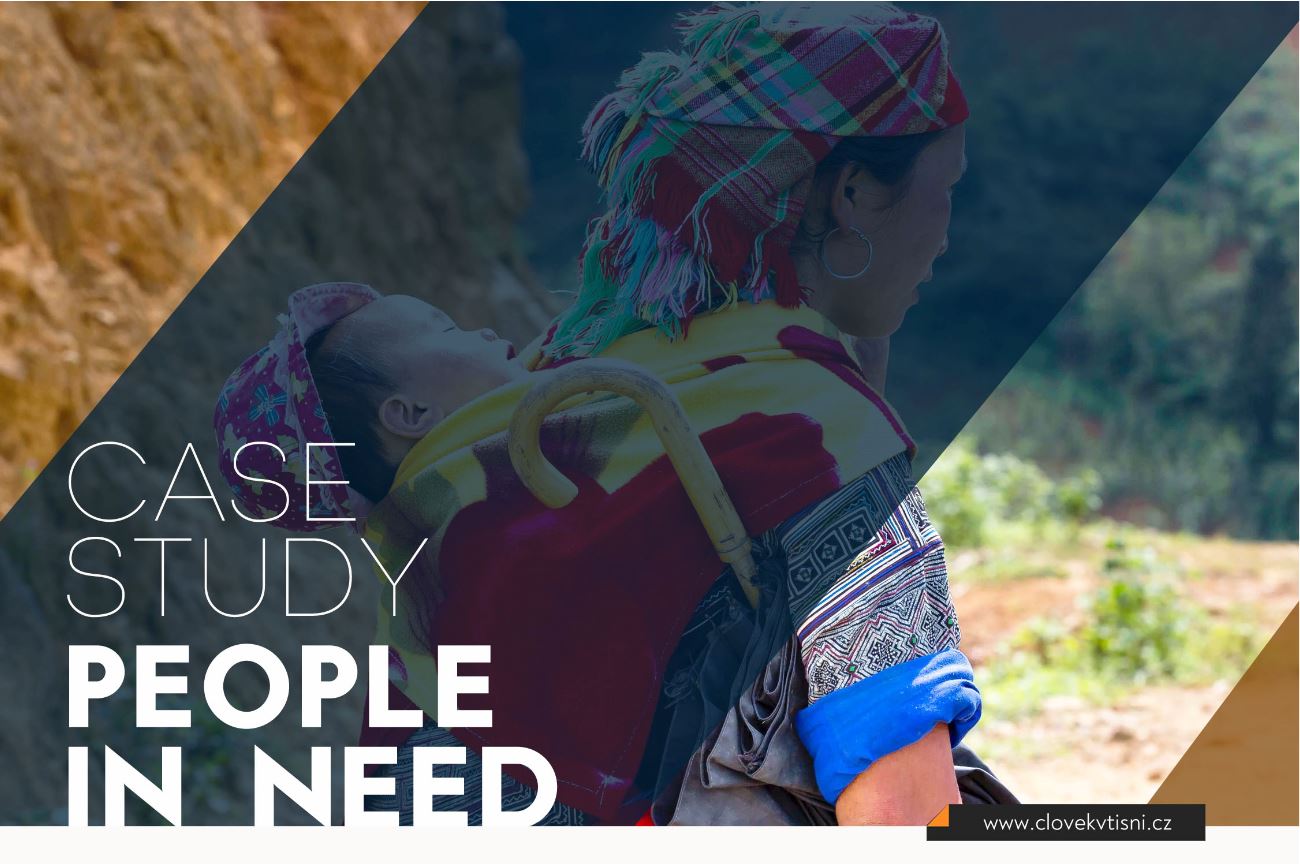Case Study: People in Need

People in Need (PIN) is a Czech-based non-profit organization providing humanitarian and development aid across the globe for over 25 years. Besides helping people get back to their feet after a crisis or calamity, PIN strives to solve key structural issues in the community such as discrimination, mental health issues, and labor market exclusion.
Background
People in Need (PIN) is one of the biggest NGOs in Central Europe. They provide emergency relief and development aid to the poorest and most vulnerable people in more than 25 countries around the world. They also tackle key structural issues that block the society’s path towards freedom, equality, and solidarity.
Following the catastrophic mega-earthquake that hit Nepal in 2015, PIN put into place programs to help local communities rebuild their homes, find employment, and become calamity resilient. But seeing as people still suffer from mental and emotional trauma, PIN knew their mission is far from finished.
In December 2018, they reached out to engageSPARK about a mHealth (mobile health) campaign for mental health outcomes among 200+ adolescent Nepali mothers aged 14-19. It was one of two interventions under the Hello Saathi Project, which is funded through the Bill & Melinda Gates Foundation. Using engageSPARK’s easy-to-use automated phone survey or IVR [1] system, they sent pre-recorded audio drama and quizzes in Nepali language to the mothers’ basic mobile phones. The lack of information and stigma attached with mental health make it a distant phenomenon. PIN thus, designed the messaging around maternal-infant health, nutrition, safe motherhood, support network, self-care and emotional wellbeing, which are the determinants of mental health. The recipients can replay the audio drama as they wish, and they were encouraged to record any questions they have about the topic. The questions are answered manually by the project team (via telephone).
Results
Many of the participants did not own a mobile phone. Some would borrow phones from their friends and relatives. So prior to sending the IVR campaign, PIN uses engageSPARK’s SMS Blast feature to send automated text message to the phone number registered in the program. This way, the participant’s friend or relative can lend their phone in time for the call. It goes like this:
Hi there!
Hello Saathi Program will call you in the next 1 hour.
PIN sends out a 1- 2-question IVR campaign to the young mothers every Monday and Thursday all throughout the 8-month Hello Saathi program. The engageSPARK system automatically schedules a call retry twice daily for the next 3 days until the mothers pick up the call or the retries are exhausted. Then, the next IVR campaign is scheduled.
To ensure the mHealth content is both relatable to the age group and culturally appropriate, PIN made it into role-play messaging. In the next interaction, the mothers are quizzed to check whether they have applied the techniques from the audio drama.
PIN applied a rewards system to keep the mothers engaged. For correct answers to the quizzes, PIN recharges the mother’s phone with mobile credit[2]. This was made easy with engageSPARK’s automated Global Airtime Top-up API where the mobile credit is automatically sent to the registered phone number as soon as the IVR is completed.
The IVR campaign covered topics on mental health awareness, including preventive care, stress coping techniques, self-awareness, seeking support from family, and the promotion of public services such as the Safe Motherhood Program and the role of Female Community Health Volunteers (FCHV).
One of the interactions goes like this:
Hello Saathi! Maya here.
Today I want to talk to you about one important part of well being. It is called self esteem. It means how we feel about ourselves, whether we feel we are important and can make valuable contributions to our families and communities.
One time I was not feeling great about myself. My sister (in law) came to visit and she noticed something was not right.
Sister: Maya, is everything ok? You seem more quiet recently.
Maya: I am not feeling great, sister. Sometimes I doubt whether what I think is at all important for others and even for me. Do you ever feel that way?
Sister: Yes, I used to when I was younger. What helped me was thinking about things I am good at. For example, I am a really good cook and people often tell me they enjoy eating what I cooked. Have you ever tried to think about your strengths?
Maya: I have not. I can’t think of anything.
Sister: Maya, there are things you are great at. I know them and you should know them too. Think about it.After we finished talking, I thought about what she said while I cooked. I realized that I am a really good friend. I have several friends who come to me to talk and often when we discuss problems I am able to listen well and them come to a solution with them, I love spending time with my friends and I think I am a really supportive person. I realized my friendship has value for these friends and have something to offer outside of my family. It felt great to realize that!
Saathi, have you ever thought about what you are good at? Something like a skill or something you learned and like doing. Try it! Now whenever I feel negative about myself, I remind myself there are people who like me and my company and it makes me feel better.

At the end of the program, PIN reported a profound change in the young Nepali mothers’ perception towards mental health and life in general with one mother quoted saying:
“I have been a shy lady all my life and was very hesitant to share my problems. I was totally unaware who to approach for support and afraid to open up. But this program has helped me get rid of my hesitation and build confidence. I am so overwhelmed by the positive impacts that this program has brought into my life”
The mobile messaging also brought to light the important role that FCHVs play in the community.
Conclusion
PIN’s mHealth intervention was well-received by the participants despite conflicting social norms. Because the engageSPARK’s IVR platform is easy to use and accessible via basic mobile phones, it helped PIN break through the existing communication barrier. While IVR campaigns are very cheap and simple to set up, they can be extremely powerful as a tool for change.
[1] Interactive Voice Response (IVR) is the technology that powers interactive automated phone calls, where humans receive a pre-recorded phone call (or call into a hotline) and interact with the call by pressing keys on their phone’s keypad. For example, PIN pre-recorded the questions it wanted to ask on its IVR survey, uploaded the audio files to the engageSPARK website, and created the survey flow. The engageSPARK system then called the participants, played back the pre-recorded audio file for the first question and waited for the participant to press keys on their phone to answer the question (e.g., press 1 for yes or 2 for no); then depending on the participant’s response, the survey might continue to the second question or a later question, or the call could end. In sum, IVR represents the concept of keypress interactions on a pre-recorded automated phone call. (Note: IVR also refers to spoken responses, where the participant speaks into the phone and their response is captured and processed).
[2] To encourage higher turnout of completed surveys, organizations use (airtime) mobile credit incentives where at the end of every completed surveys, participants automatically receive an X amount of mobile credit to their mobile phones. Check out our other case studies on how other organizations such as the International Organization for Migration and Johns Hopkins University use airtime incentives for their humanitarian initiatives and research studies.


